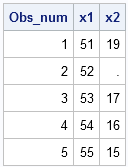
"Convergence after 23 iterations to (1.23, 4.56)." That's the message that I want to print at the end of a program. The problem, of course, is that when I write the program, I don't know how many iterations an algorithm requires nor the value to which an algorithm converges. How








